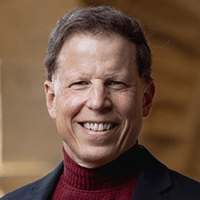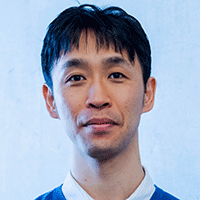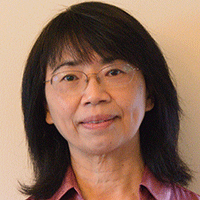
Ken Goodson
Vice Provost for Graduate Education & Postdoctoral Affairs
Davies Family Provostial Professor
Professor of Mechanical Engineering and, by courtesy, Materials Science and Engineering
Stanford University
Presentation Title: Materials Engineering Innovations for Advanced Electronics Cooling
Abstract: Novel materials and fabrication technologies are the hallmark of impactful thermal management solutions across all types of electronic systems, from servers and power electronics to portables. Materials engineering is bringing about dramatic advancements in IC-compatible synthesis, additive manufacturing, electrodeposited nanostructures, metal-organic and covalent organic frameworks, and other technologies. This enables progress in 1) high thermal conductivity materials, or those combining high conductivity with other targeted properties, 2) fabrication techniques for integrating thermal solutions within packaging and 3D chips, and 3) surface treatments or micro/nanostructures that enhance microfluidic cooling by refining phase change, capillary, or conjugate physics. This talk will describe the virtuous cycle of materials engineering and cooling research with a focus on advances to expect in the years ahead.
Materials engineering is enabling energy-efficient microfluidic cooling of modern compute platforms including data centers. We will review embedded solutions in 2.5D and 3D chips with a focus on high conductivity fluid-contact materials and surface treatments that improve evaporation and capillary transport. Stanford progress using micro/nanomachined metals - including inverse opals, nanowires, and cactus/flower-shaped structures - manages 1000W/cm2 across 900 mm2 using both pumped and capillary-driven convection. Our 3D integrated, hierarchically scaled manifolding reduces pressure drops and aids with phase separation.
Materials engineering has played a central role in thermal conduction solutions including high conductivity substrates and spreaders with characteristic thicknesses from a few hundred micrometers to several millimeters. There are two essential strategies in this domain: First, achieve relatively high thermal conductivities in dielectric submicrometer films that are candidate replacements for oxide and organic on-chip passivation or as thermal interface materials in packaging. This talk features Stanford progress on low-temperature deposited diamond and AlN films for on-chip applications, as well as nanostructured interface materials that minimize the effects of thermal expansion mismatch between chip and heat sink. Second, achieving very high thermal conductivity in spreading regions, both on-chip and in packaging, in many cases with an effort to target additional mechanical properties such as thermal expansion coefficient. In this area, this talk will review progress on composite substrates based on diamond films and microparticles for power electronics.
This talk will feature our collaborative research and prototyping efforts with Silicon Valley IC companies and will frame progress within the growing thermal demands and environmental impact of electronic systems. Data center cooling needs are particularly urgent, where AI is projected to drive a 160% increase in power demand by 2030, nearly doubling energy use. Nearly 20% of the ~100 billion kWh/year consumed by U.S. data centers goes toward refrigeration-based cooling. The talk will also address rising thermal challenges in power electronics, which are key for electric and hybrid vehicles, with a focus on cooling problems both in automotive electronics and fast charging. We will review progress by the NSF POETS Center (Power Optimization of ElectroThermal Systems), a collaboration among UIUC, Howard, U of Arkansas, and Stanford, which has prototyped technologies that will enable 10–100× increases in power density—accelerating electrification across transportation and aerospace sectors.
Biography: Ken Goodson is the Vice Provost for Graduate Education & Postdoctoral Affairs and the Davies Family Provostial Professor at Stanford University, where he holds appointments in Mechanical Engineering and (by courtesy) Materials Science and Engineering. His 60 PhD graduates are distributed among IC companies and professorships at schools including MIT, Princeton, Stanford, UC Berkeley, UIUC, Purdue, and UCLA. Goodson is a member of the National Academy of Engineering and a Fellow with ASME, IEEE, APS, AAAS, and the National Academy of Inventors (NAI). Awards include the ASME Kraus Medal, the inaugural IEEE Richard Chu Award, the 2017 InterPACK Achievement Award, the AIChE Kern Award, and the SRC Aristotle, Technical Excellence, and University Researcher Awards. Goodson has 35 patents and co-founded Cooligy, which built heat sinks for Apple desktops. He served formerly as Stanford Mechanical Engineering Chair and recruited 15 faculty who transformed the department’s scholarship and diversity.

Yoshihiro Tanaka
Nagoya Institute of Technology, Nagoya, Japan
Inamori Research Institute for Science, Kyoto, Japan
Presentation Title: Unlocking Human Potential through Haptic Sharing
Abstract: Touch is more than a sense—it is a bridge between our body and the physical world, shaped by their mechanical interaction. It reflects not only the properties of external objects but also the unique characteristics of our own body. Recent advances in technologies for measuring, presenting, and transmitting haptic information, together with developments in robotics, have made it possible to share tactile and haptic sensations with others, expanding the potential of human capabilities. Beyond object identification, touch plays a crucial role in sensorimotor control. Haptic feedback can enhance perception and improve operability, while haptic sharing can physically connect humans and robots, enabling new forms of embodied collaboration that transcend physical boundaries. In this talk, I will first present findings on individual differences in haptic perception. I will then introduce technologies that directly share tactile sensations, as well as a "body integration" system in which multiple people operate a single robotic avatar, and demonstrate examples of their real-world use. Finally, I will explore future possibilities and the new bodily experiences that haptic sharing can make possible.
Biography: Yoshihiro Tanaka skipped from the undergraduate program to the Graduate School of Engineering at Tohoku University in 2001 and received his Ph.D. in Engineering from the same university in 2006. In 2005, he was a Research Fellow with the Japan Society for the Promotion of Science. He then joined the Nagoya Institute of Technology (NITech), Japan, as a Research Associate in 2006. He was a Visiting Researcher at Utrecht University, The Netherlands, in 2011, and a PRESTO Researcher with the Japan Science and Technology Agency from 2014 to 2018. Since 2021, he has been a Professor with the Graduate School of Engineering at NITech, where he directs the NITech Haptics Lab. His lab conducts research and development on tactile design in products based on perceptual mechanisms, sensorimotor assistance technologies, and cooperation and communication systems utilizing shared haptic perception. He also serves as a Special Advisor to the NITech President, an Associate Editor of IEEE Transactions on Haptics, a Senior Editor of Advanced Robotics, and a Fellow of the Inamori Research Institute for Science.

Dr. Qing Dai
Distinguished Engineer
The CTO Office
Western Digital Technologies
Presentation Title: HAMR Interface Reliability Challenges
Abstract: HDD Industry has successfully demonstrated the viability of HAMR technology and is shipping products to customers. However, it faces significant reliability challenge as industry continues to scale the areal density.
HAMR media uses FePt as magnetic medium with a Curie temperature around 350C. The recording layer is coated with conventional carbon overcoat and PFPE lubricant. During recording, media surface peak temperature is predicted to be no less than 400C. Under such elevated temperature, both lubricant and media overcoat can become unstable, resulting in smear comprising mostly of media material accumulating on heads.
On the head side, the plasmonic antenna, which is used to convert optical light from laser into nanometer scale hot spots in the media, often contains Au which is susceptible to deformation at high temperature. As the dimensions of the Near Field Transducer (NFT) continue to reduce to support higher areal density, NFT becomes more susceptible to deformation which in turn causes writability deterioration.
Additionally, it was shown that, when media material is accumulated under the NFT, it can be opaque and is likely to further elevate the NFT temperature due to smear self-heating. To ensure HAMR technology success, it is critical to prevent the accumulation of optically absorbing smear under NFT. In this presentation, we will discuss the challenges and opportunities in smear understanding and management. For example, it has been postulated that at HAMR interface, a layer of SiO2 on the head is beneficial. Its role and implication will be explored.
In addition to heat generated by absorbing smear, another factor that has not been discussed is possible photochemical process-induced polymerization reactions. With intense surface plasmon concentrated at the tip of the NFT, this area is potent for a variety of chemical reactions. For example, in literature, surface enhanced local plasmon resonance on Au nano particles are used to select polymerization reactions with the right energy level. Should polymerization reactions occur under NFT, it can often be exothermic. Intense heat generated will further compromise NFT reliability. As such, detailed study of possible polymerization reactions and their prevention is needed.
Biography: Qing Dai received her Ph.D. in physical chemistry from UIUC, followed by postdoctoral research positions at the Lawrence Berkeley National Lab and Harvard University. She started her R&D tribology career at the IBM Almaden Research Center, focusing on nanometer scale interface materials for Hard Disk Drives which became part of Western Digital Technologies via Hitachi/HGST.
Dr. Qing Dai entered management role around 2010, built a team of ~20 engineers over the years with cross disciplinary expertise spread between Japan and the US. This team played critical role in delivering WD's cutting edge technologies such as Energy Assisted Perpendicular Magnetic Recording Technologies. Her team has been leading the fundamental understanding of HAMR head disk interface challenges since 2011. Qing is a Distinguished Engineer in the CTO Office of WD. In recent years, she was invited to speak at several internal and external events, including the Industrial Day event during the 2025 Intermag/MMM joint conference in New Orleans, where she reviewed HAMR interface reliability challenges.